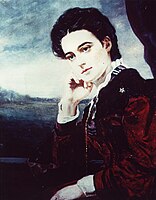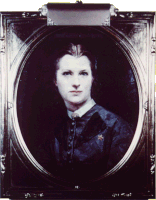What Does Peo Stand for Women's Group
education organization based in Des Moines, USA
| P.E.O. Sisterhood | |
|---|---|
| PEO | |
 | |
| Founded | January 21, 1869; 152 years ago (1869-01-21) Iowa Wesleyan University, Mount Pleasant, IA |
| Type | General |
| Emphasis | philanthropic |
| Scope | international |
| Motto | Women helping women reach for the stars |
| Symbol | Star |
| Flower | Marguerite Daisy |
| Publication | P.E.O. Record |
| Philanthropy | Educational Loan Fund Peace Scholarship Continuing Education Scholar Awards STAR Scholarship Cottey College |
| Members | 230,000 lifetime |
| Headquarters | 3700 Grand Avenue Des Moines, IA 50312 USA |
| Website | P.E.O. Sisterhood homepage |
The P.E.O. Sisterhood (Philanthropic Educational Organization) is a U.S.-based international women's organization of about 230,000 members, with a primary focus on providing educational opportunities for female students worldwide. The Sisterhood is headquartered in Des Moines, Iowa, with chapters throughout the United States and Canada. Among other projects, it owns and supports Cottey College, an independent college for women in Nevada, Missouri.
History [edit]
The Sisterhood was founded on January 21, 1869,[1] as a seven-member sorority at Iowa Wesleyan University in Mount Pleasant, Iowa. It was the second sorority to be founded in the U.S., after I. C. Sorosis (now known as Pi Beta Phi) in Monmouth, Illinois in April 1867.[2] The founding members were Mary Allen [Stafford] (1848–1927), Ella Stewart (1848–94), Alice Bird [Babb] (1850–1926), Hattie Briggs [Bousquet] (1849–77), Franc Roads [Elliott] (1852–1924), Alice Virginia Coffin (1848–88), and Suela Pearson [Penfield] (1851–1920).[1] The sisterhood was founded after only some of the seven girls were invited to join a chapter of I. C. Sorosis organized in Mount Pleasant a month earlier, and they would not join without the others.[1] [3]
The organization was originally rooted in the philosophy and institutions of the Methodist Church, which actively promoted women's rights and education in America during the 19th century.[4]
Further chapters were founded, and in 1883 local chapters of the P.E.O. founded a "Supreme Chapter" to coordinate the Sisterhood on a national level.[5] The first International chapter (i.e. outside the United States) was established in Vancouver, British Columbia, Canada in 1911.[6]
Although P.E.O. began as a collegiate sorority at Iowa Wesleyan, tensions developed between that original chapter and the wider body. In 1902 the Iowa Wesleyan chapter left P.E.O., to be reconstituted as the second chapter of Alpha Xi Delta (founded in 1893 at Lombard College, Illinois).[7] Since then, P.E.O. has been essentially a community-based organization.
Name [edit]
For much of its history, the meaning of "P.E.O." in the organization's name was a closely guarded secret and was never made public.[8] In 1924, it was said that "These letters are 'mystic'. None save the initiated know their meaning."[9] The organization's avoidance of publicity, and the secrecy of its name, caused it to be regarded as a "secret society".[3] [10] [11]
In 2005, the Sisterhood unveiled a new logo and an "It's OK to Talk About P.E.O." campaign, which sought to raise the public profile of the organization while nonetheless maintaining its traditions of secrecy.[8] [12] In 2008, it revised its website to indicate that "P.E.O." now publicly stands for "Philanthropic Educational Organization". However, the Sisterhood acknowledges that "P.E.O." originally had a different meaning that continues to be "reserved for members only", and so the public meaning is not the only one.[13]
Ritual and symbolism [edit]

Membership in P.E.O. is by invitation but is not secret. Meetings for members are, however, highly guarded and a secret password must be used to prove membership. They are opened with prayers and with inspirational readings chosen by members, but P.E.O. meetings and activities do not require any particular religion or religious practice, except for a belief in God.[14] Meetings follow a structured agenda, but do not involve religious rites, and do not meet any formal definition of "ritualistic".
At her initiation, every member receives a P.E.O. emblem, a five-pointed star. Members are encouraged to wear their emblems on January 21, Founders' Day.[15] The emblem is lent to the individual for as long as she remains an active member of a chapter. On her death, it may be buried with her if she has requested this in writing: otherwise, it is to be returned to her chapter or to the P.E.O. Executive.[13]
The P.E.O. official flower is the marguerite daisy.[5]
Activities [edit]
P.E.O.'s core mission is to promote educational opportunities for women. It has six philanthropic projects, which include Cottey College, an independent, liberal arts and sciences college for women. Five programs provide assistance to women for higher education: P.E.O. Educational Loan Fund, P.E.O. International Peace Scholarship Fund, P.E.O. Program for Continuing Education, P.E.O. Scholar Awards, and P.E.O. STAR Scholarship.
As of April 2020, nearly $366 million has been awarded to over 113,000 women from the organization's six educational philanthropies. P.E.O. has awarded Educational Loan Fund (ELF) dollars totaling more than $221 million, International Peace Scholarships (IPS) are more than $42.1 million, Program for Continuing Education (PCE) grants are more than $62.4 million, P.E.O. Scholar Awards (PSA) are more than $28.2 million and P.E.O. STAR Scholarships (STAR) are more than $12.8 million. [16]
Cottey College [edit]
Cottey College, established in 1884, is an independent liberal arts and sciences college for women located in Nevada, Missouri. Its residential student capacity of 350 students typically represents 40 states and 25 countries annually.[17] Cottey is wholly owned by the P.E.O. Sisterhood.
P.E.O. Educational Loan Fund [edit]
Educational Loan Fund (ELF) is a revolving loan fund established in 1907 to lend money to qualified women students to assist them in securing a higher education.
P.E.O. International Peace Scholarship [edit]
P.E.O. International Peace Scholarship (IPS) Fund was established in 1949 to provide scholarships for international women students to pursue graduate study in the United States and Canada.
P.E.O. Program for Continuing Education [edit]
P.E.O. Program for Continuing Education (PCE) was established in 1973 to provide need-based grants to women in the United States and Canada whose education has been interrupted and who find it necessary to return to school to support themselves and/or their families.
P.E.O. Scholar Awards [edit]
P.E.O. Scholar Awards (PSA) was established in 1991 to provide substantial merit-based awards for women of the United States and Canada who are pursuing a doctoral level degree at an accredited college or university. The numbers of awards is determined each year in accordance with the funds available. The current maximum award is $20,000.
P.E.O. STAR Scholarship [edit]
The P.E.O. STAR Scholarship was established in 2009 to provide a $2,500 scholarship for exceptional high school senior women to attend an accredited postsecondary educational institution in the United States or Canada in the following academic year.[18]
Membership [edit]
In 1966 the Sisterhood had 130,000 members. At that time membership was open to women over 18, who believed in God and had lived at their present address for a least a year. It was said to appeal to "Protestant women of some social standing and college education".[10]
Although always officially nonsectarian, P.E.O. has evolved over recent generations into a deliberately diverse, community-based organization with nearly 6,000 chapters and some 230,000 members. It has chapters in each of the 50 United States, District of Columbia and in six Canadian provinces. It now aims to serve women worldwide, and to welcome women of all races, religions and backgrounds. It emphasizes that it does "not discriminate against any woman based on age, ethnicity, religion or education. The Sisterhood is based on friendship and mutual respect. P.E.O. is not political nor is it a political action group."[14]
Notable members [edit]
- Laura Chenoweth Butz[19]
- Saidie Orr Dunbar[19]
- Isabel H. Ellis[19]
- Iris Pavey Gilmore[19]
- Kate Wetzel Jameson[19]
- Jeanette Lawrence[19]
- Ona F. Meens[19]
- Sara E. Morse[19]
- Edith Allen Phelps[19]
- Rachel Irene Seibert[19]
Founders' portraits [edit]
In the 1920s, the P.E.O. commissioned a set of portraits in oil of its seven founders from Marion Dunlap Harper. The paintings were unveiled in P.E.O. Memorial Hall in Mount Pleasant on September 23, 1929. They are composites sourced from a collection of sketches, portraits and photographs: those of Alice Coffin and Franc Roads are based on photographs taken at the same studio, and they are wearing the same cape.[20]
-

Alice Bird Babb (May 8, 1850 – November 21, 1926)
-

Mary Allen Stafford (December 30, 1848 – July 10, 1927)
-

Suela Pearson Penfield (August 24, 1851 – September 20, 1920)
-

Ella Stewart (May 8, 1848 – December 12, 1894)
-

Hattie Briggs Bousquet (October 10, 1849 – June 22, 1877)
-

Alice Coffin (March 29, 1848 – July 28, 1888)
References [edit]
- ^ a b c Clapp 1968, p. 1.
- ^ Wolf-Wendel, Lisa; Sheila Pedigo (1999). "Two-Year Women's Colleges". In Barbara K. Townsend (ed.). Two-Year Colleges for Women and Minorities. Routledge. p. 57. ISBN0-8153-3173-8.
- ^ a b Axelrod, Alan (1997). The International Encyclopedia of Secret Societies and Fraternal Orders . New York: Facts on File. p. 196. ISBN0816023077.
- ^ Moudry 2013.
- ^ a b Preuss 1924, p. 396.
- ^ Clapp 1968, p. 289.
- ^ Becque, Fran (17 April 2017). "On its founding day, Alpha Xi Delta and its connection to the P.E.O. Sisterhood". Fraternity History and More . Retrieved 19 May 2019.
- ^ a b Talking P.E.O.: How does an organization introduce a new identity to the public? By first reassuring itself that 'It's OK' to change. Archived 2015-03-13 at archive.today (article by Sheree Clark in Feb./Mar. 2006 issue of Dynamic Graphics magazine)
- ^ Preuss 1924, p. 395.
- ^ a b Whalen, William J. (1966). Handbook of Secret Organizations . Milwaukee: Bruce Publishing Co. p. 130.
For some reason this women's secret society seeks to preserve an unusual degree of secrecy about its activities and ritual. It does not even reveal the significance of its name – P.E.O. – but this is thought to stand for Protect Each Other.
- ^ "Hide it Under a Bush, Hell No: Women's Volunteer Associations as Adult Education Initiatives" Patricia Moran (2007). ProQuest.
- ^ Fox, Joanne (6 January 2011). "P.E.O. is no secret". Sioux City Journal . Retrieved 14 March 2015.
- ^ a b "Frequently Asked Questions". P.E.O. Retrieved 6 January 2019.
- ^ a b "P.E.O. Membership". P.E.O. Retrieved 6 January 2019.
- ^ Becque, Fran (21 January 2015). "Helping Women Reach for the Stars – The P.E.O. Sisterhood Turns 146!". Fraternity History and More . Retrieved 6 January 2019.
- ^ "About P.E.O. | P.E.O. International". www.peointernational.org . Retrieved 2020-04-16 .
- ^ P.E.O. International Sisterhood, About Cottey College , retrieved 25 February 2015
- ^ "About the P.E.O. STAR Scholarship (STAR) | P.E.O. International". www.peointernational.org . Retrieved 2020-04-13 .
- ^ a b c d e f g h i j Binheim, Max; Elvin, Charles A. (1928). Women of the West: a series of biographical sketches of living eminent women in the eleven western states of the United States of America. Los Angeles: Publishers Press.
 This article incorporates text from this source, which is in the public domain .
This article incorporates text from this source, which is in the public domain . - ^ Clapp 1968.
Sources [edit]
- Clapp, Stella (1968). Out Of The Heart: A Century of P.E.O. 1869–1969. Des Moines, Iowa: P.E.O. Sisterhood.
- Moudry, Susan (October 2013). "'A society of our own': Methodists, coeducation and the founding of P.E.O.". Methodist History. 52 (1): 33–42.
- Preuss, Arthur (1924). A Dictionary of Secret and Other Societies. St. Louis: B. Herder Book Co. pp. 395–396.
External links [edit]
- Official website
- Cottey College
What Does Peo Stand for Women's Group
Source: https://en.wikipedia.org/wiki/P.E.O._Sisterhood